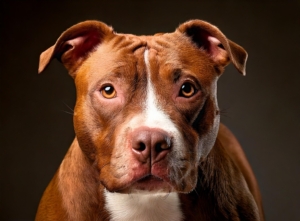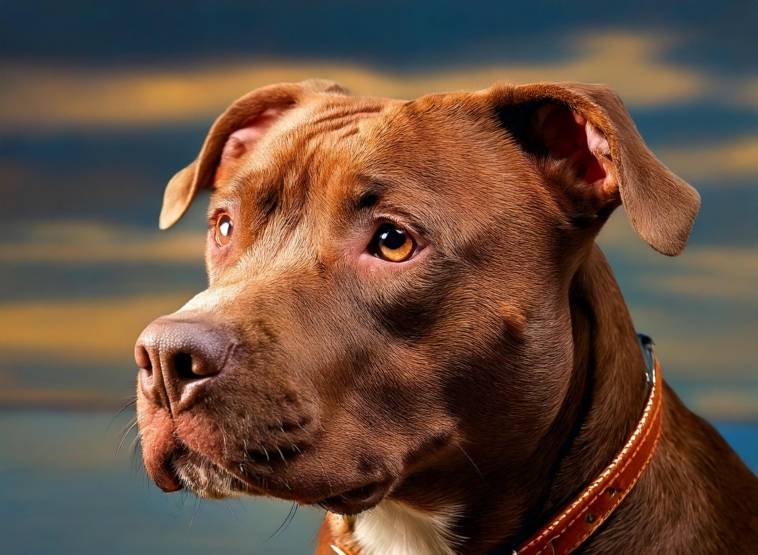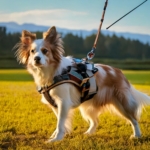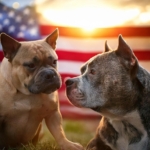Here’s an overview:
Introduction to the American Pitbull Terrier breed
History and Genealogy of the American Pitbull Terrier
Physical Characteristics and Appearance
Common Misconceptions and Myths
Temperament and Personality Traits
Training and Socialization Techniques
American Pitbull Terrier Health and Lifespan
Best Environment for Pitbulls and Their Exercise Needs
Feeding and Nutritional Requirements For American Pitbull Terriers
The Role of American Pitbull Terriers in Modern Society
Adopting and Selecting a Responsible Breeder
Legal factors and breed specific laws
Conclusion and key takeaways on American Pitbull Terrier
Introduction to the American Pitbull Terrier breed
The American Pitbull Terrier is noted to be gentle and affectionate whilst strong and agile. These dogs date back to the 19th century and were first used for bull baiting and later developed for farm work, hunting, and as loyal companions. Whereas pitbulls have a strong brick like muscular body with a wide and squat skull and a short coat, they also possess a confident and obstinate temper.
Major Facts:
- Height: 17-21 inches in height at the shoulder level
- Weight: 30-60 pounds
- Lifespan: 12-16 years of age
Temperament:
- Confident
- Loving
- Willing to learn
They do, however, require proper training and socialization if they are to be good family pets.
History and Genealogy of the American Pitbull Terrier
The American Pitbull Terrier has its ancestors in the early 19th century dogs in England. The intention of the breeders was to produce a dog that possessed terrific strength and also tremendous fighting spirit to match. Thus developed from the bulldog a dog crossed with terriers for weight purposes but originally used for bull-baiting and similar blood sports.
- 19th Century England: Crafting them for bull baiting.
- Bulldog and Terrier Mix: Blending them for superior strength and speed.
- Arrival in American: Brought by immigrants in the USA.
- Change Over Time: Used as sportdogs to more productive dogs that herded and protected.
As a result of the mixture the evolution of the breed was realized that has well establish characteristics of strength and loyalty for many purposes
Physical Characteristics and Appearance
The American Pitbull Terrier stands out due to its muscular and well-built physique. It features a square head which is flat and wide, while the muzzle is more rounded and medium in length. Its ears are either cropped or natural, high up on the head, and the eyes are round and spaced low. The neck is thick and strong, tapering into the shoulders which are well defined. The chest is deep and broad with a solid barrel frame. They possess good rib depth and well-muscled hips which give them great strength. Their coat type is short, straight, and slick which comes in a variety of shades and patterns suitable for their athletic build.
Common Misconceptions and Myths
It is quite unfortunate that American Pitbull Terriers have many unfounded stigmas.
- Aggression: Many assume that APBTs are aggressive by nature, which is not the case as aggression is attributed to lack of training and abuse.
- Locking Jaw: There is also a misconception that APBTs have jaws that lock when biting, but this is not accurate.
- Banned Everywhere: As much as there are places that have laws that prohibit such breeds, it does not mean that it has been banned globally.
- Unsuitable as Family Pets: Affectionate and devoted companions APBTs are, when brought up appropriately with proper training, as well as socializing as a child.
- Not Good with Other Dogs: When given the right education APBTs do not have a problem living with other dogs and don’t cause any trouble.
Temperament and Personality Traits
American Pitbull Terrier is famous for the devotion and love it was given its affectionate nature. Also, this breed is very intelligent and has the urge to please, making it quite an excellent candidate for training.
- Loyalty: Faithful to family and can be very protective.
- Affection: 35346358 Class D Digging companion and sometimes likes to interact.
- Intelligence: Easy to train, fairly quick learner.
- Energy Levels: High; needs a substantial amount of exercise.
- Social Behavior: Most are pleasant, once proper socialization is undertaken.
- Confidence: Usually, brave and fearless in many circumstances.
“A combination of loyalty, intelligence and energy in the American Pitbull Terrier is what makes it an interesting and loving pet.”
Training and Socialization Techniques
Responsible training and socialization of American Pitbull Terrier is very important for being an obedient and well-adjusted dog.
Pitbull Training Tips:
- Positive Reinforcement: Rewards such as treats and praises should be provided when a dog exhibits good behavior.
- Consistency: To avoid confusion, rules should be followed and the routine should remain the same.
- Early Training: For the best outcome, training should start at the youngest age possible.
- Basic Commands: Basic commands such as sit, stay and come should be the first taught.
- Professional Training: Enroll in obedience classes for more specialized training techniques.
Pitbull Socialization Techniques:
- Early Exposure: It is good to bring them into different places, sounds and people early on.
- Social Play: Arrange play dates with other pets and have fun in the park or any designated area.
- Graduated Socialization: Gradually facilitate contact with unfamiliar animals and people.
American Pitbull Terrier Health and Lifespan
The lifespan of American Pitbull Terriers is in the range of 12-16 years. Longevity can be determined by proper care. Some health problems may be seen in them:
- Dysplasia of the Hip Joint: Another common disease of the joints.
- Allergies: Allergy to the skin often happens.
- Thyroid Disorder: There is a likelihood of an underactive thyroid.
- Heart Disease: There can be congenital heart disease.
- Cataracts: Possibly disturbance in the eye.
It is important to have routine veterinary check-ups, maintain a balanced diet and conduct regular exercise as part of health management. Vaccinations and control of endo and ecto-pests are very important. Control of body mass helps guard against obesity. Dental care on a routine basis prevents periodontal disease. By treating and diagnosing health problems in their early stages, a better quality of life can be experienced by the patients.

Best Environment for Pitbulls and Their Exercise Needs
In American Pitbull Terriers, both physical and mental stimulation is provided in adequate amounts therefore, they do not have problems fitting into any environment specifically. These type of dogs tend to do best in houses that can offer outdoor access.
House Type:
- Houses with a fenced yard are preferable.
- Can cope with apartment living if properly exercised.
Daily Exercise Practices:
- Should undergo 60 to 90 minutes of vigorous exercise daily.
- Like running, hiking, and fetch.
Mental Stimulation:
- Obedience training and puzzles are effective for dogs.
Become one with agility or obedience courses.
Exercise and proper living conditions are key to a well socialized and satisfied Pitbull Terrier.
Feeding and Nutritional Requirements For American Pitbull Terriers
A proper diet really makes a difference of American Pit bull Terriers. After getting one, the owners should:
- Offer quality commercial dry dog food.
- Let proteins be the main ingredient.
- Use the appropriate oils for a healthier coat.
- Control caloric intake and avoid over weight.
- Keep water clean and renewed.
Feeding directions:
- Puppies: 3-4 meals.
- Adults: 2 meals.
Do not:
- over indulgence with treats.
- offer foods like chocolate or onion.
Supplementation:
- Vits/Minerals should be given interpretation from a vet.
- Prioritize joint health, especially for active dogs.
You can change these portions depending on age and activity levels.
The Role of American Pitbull Terriers in Modern Society
American Pitbull Terriers in some parts of the world are becoming more appreciated for their many uses and benefits to the society. Some of their roles consist of:
- Services Animals: They are taught to perform a specific duty to help the disabled people.
- Therapy Animals: are used in hospitals, schools and those areas afflicted by great disasters.
- Law Enforcement: Help in detection work because of their strong ability to smell.
- Sports: Competitors of different kind of events, such as involving obstacles, obedience, and weight pulls.
- Rescue Operations: They help in search-and-rescue operations due to their resilience and agility.
Adopting and Selecting a Responsible Breeder
When planning on placing an adoption for an American Pitbull Terrier, first do some research on the breeder and confirm their reputation for being a responsible breeder. Here is what you should consider:
- Research and References: Referrals and previous clients’ reviews could help to appraise the breeders.
- Health Screenings: Confirm that breeders perform specific health tests on both parents and their offspring.
- Facility Visits: Check the site of residence to be sure the place is not only tidy but also decent for a variety of animals.
- Breeder Knowledge: Look for breeders who possess good knowledge about the character and requirements of the breed.
- Interview Process: Generally, the breeders ask many questions ensuring their adopted puppies go to deserving families.
- Contracts and Guarantees: Look for a written agreement which offers protection on the health of the puppy and the responsibilities of the breeder.
Responsible posterior practices also promote the welfare and the health of the breed.
Legal factors and breed specific laws
Due to their aggressive breed nature, the American Pitbull Terrier often faces some challenges with the law however such laws as breed specific legislation BSL is meant to minimize the number of dog attacks by banning or placing restrictions on the ownership of certain breeds.
Point wise Summary:
- Ownership Restrictions: Other jurisdictions impose some restrictions on area ownership, insurance requirements, paddock restrictions, and sterilization as well.
- Bans: For instance, residents have restrictions involving absolute bans on the Pitbull breed in some geographic areas.
- Legal Consequences: Non compliance with the BSL laws may include penalties in fines, the obligation to take the dog away and sometimes destruction of the animal.
- Licensing: The demographics of Pitbull breed owners may be required to license their dogs as well as adhere to the MO requirements.
There are local laws that any potential owner needs to understand.
Conclusion and key takeaways on American Pitbull Terrier
- History: The British Isles are believed to be its native environment where it has a history as was used for bull baiting and later as helpful to farm and as companion.
- Physical Traits: The feature that they are muscular, broad-headed and with short coats. They also come in varied colors.
- Temperament: Loyal, friendly and quite intelligent but needs to be well trained and socialized.
- Health Caution: Health problems include the hip dysplasia, skin allergies and heart problems.
- Exercise: All the breeds are of high energy so require daily exercise as well as mental stimulation in terms of playtime.
- Feeding: A Balanced diet coupled with quality dog food is acceptable. Portion management helps to avoid obesity.
- Grooming: They have a coat which does not require much attention. Healthy skin and coat requires suitable brushing and grooming on a regular basis.
Article by: Tawab Sukhera (Ethologist)




